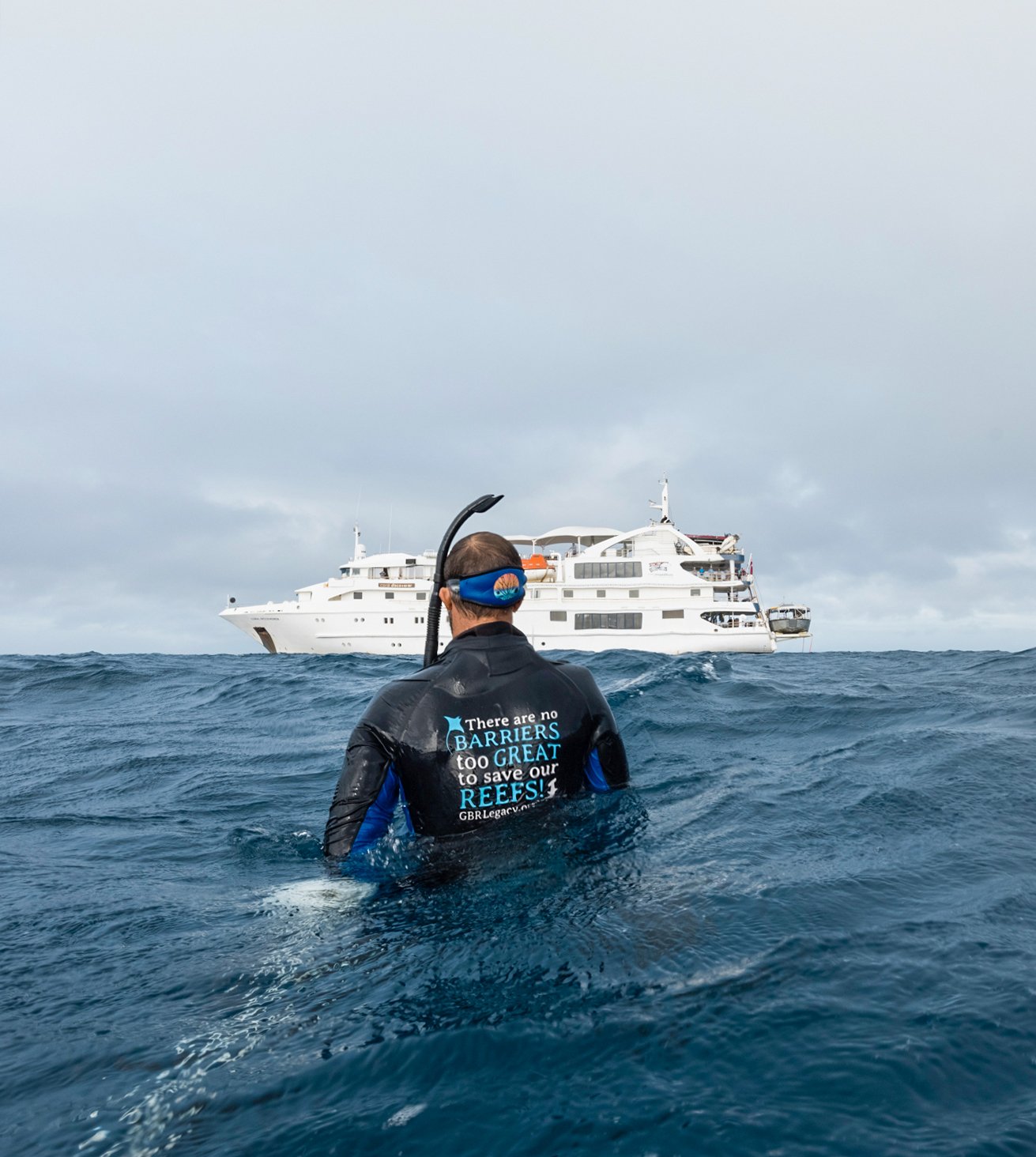Great success on Barrier Reef citizen science expedition

A joint expedition partnership initiative between Australian Geographic, Coral Expeditions and GBR Legacy took place this month when the Australian small ship cruise line brought together a cohort of conservation-minded guests and expert scientific specialists to partake in an inaugural “Citizens Science of the Great Barrier Reef” voyage over 10 nights from Cairns, Australia.
The expedition content was led by some of the world’s leading reef and species scientists and focused on two key conservation projects including an in-depth behavioural study of the rare dwarf minke whales and the surveying and sample collection of coral species to add to the Living Coral Biobank, a ground-breaking project to preserve and protect coral diversity for the future.
Dr Dean Miller, Managing Director of GBR Legacy, introduced guests onboard to the ‘how and why’ of collecting and preserving coral samples and to the vision of the Living Coral Biobank. “On this expedition, we were thrilled to add an additional 50 species of coral to the collection we currently have, making a total of 85 species in the Biobank”, says Dean, “With every coral bleaching event, we are at risk of losing the most vulnerable corals.” The work during the voyage was essential in helping us secure around 22 per cent of the diversity of hard corals on the Great Barrier Reef and involved a scientifically significant event when Dr Charlie Veron identified a new species on the first day of the expedition.
The waters of the northern Great Barrier Reef host the only known predictable aggregation of dwarf minke whales during the few short winter months, and minke whale expert Dr Alistair Birtles was onboard to share his knowledge on their behaviour. Guests were able to enter the water in small numbers and with tightly managed protocols to share eye to eye encounters with these unique and curious creatures.

On day five, the GBR Legacy team assisted Alistair and the Minke Whale Project and experienced a four-hour encounter with some great passes from a mother and calf, the longest known engagement of a cow and calf with a vessel. This allowed the team to get up close and high-resolution photos and videos to identify the animals as well as collect valuable skin samples for genetic analysis. Every passenger was on deck helping with the data collection over more than 1000 data points, and simply enjoying this spectacle as mum and calf interacted with the vessel and research team.
Coral Expeditions Product Manager, Tamara Sweeting said, “We are proud of the vision and the outcome of our first fully-focused Citizen Science expedition. The deeply meaningful science projects were blended seamlessly with the renowned adventure holiday experience our guests are accustomed to. We immersed ourselves in the ecosystem of remote outer reefs and islands of the Great Barrier Reef and then relaxed in good company with sunset drinks on secluded sand cays at days end. That is the essence of our expedition experience.”

Coral Expeditions and guests onboard contributed a sum of $30,000 in funding from the expedition to go towards the GBR Legacy Living Biobank Project and has developed plans to conduct citizen science voyages annually in different regions of the Great Barrier Reef and further afield around Australia including natural events such as the 2022 coral spawning on the Great Barrier Reef, a 2023 hybrid solar eclipse voyage in Australia’s north-west and a turtle conservation expedition along the length of the GBR in 2024.
You can find out more about Coral Expeditions and its voyages here.




